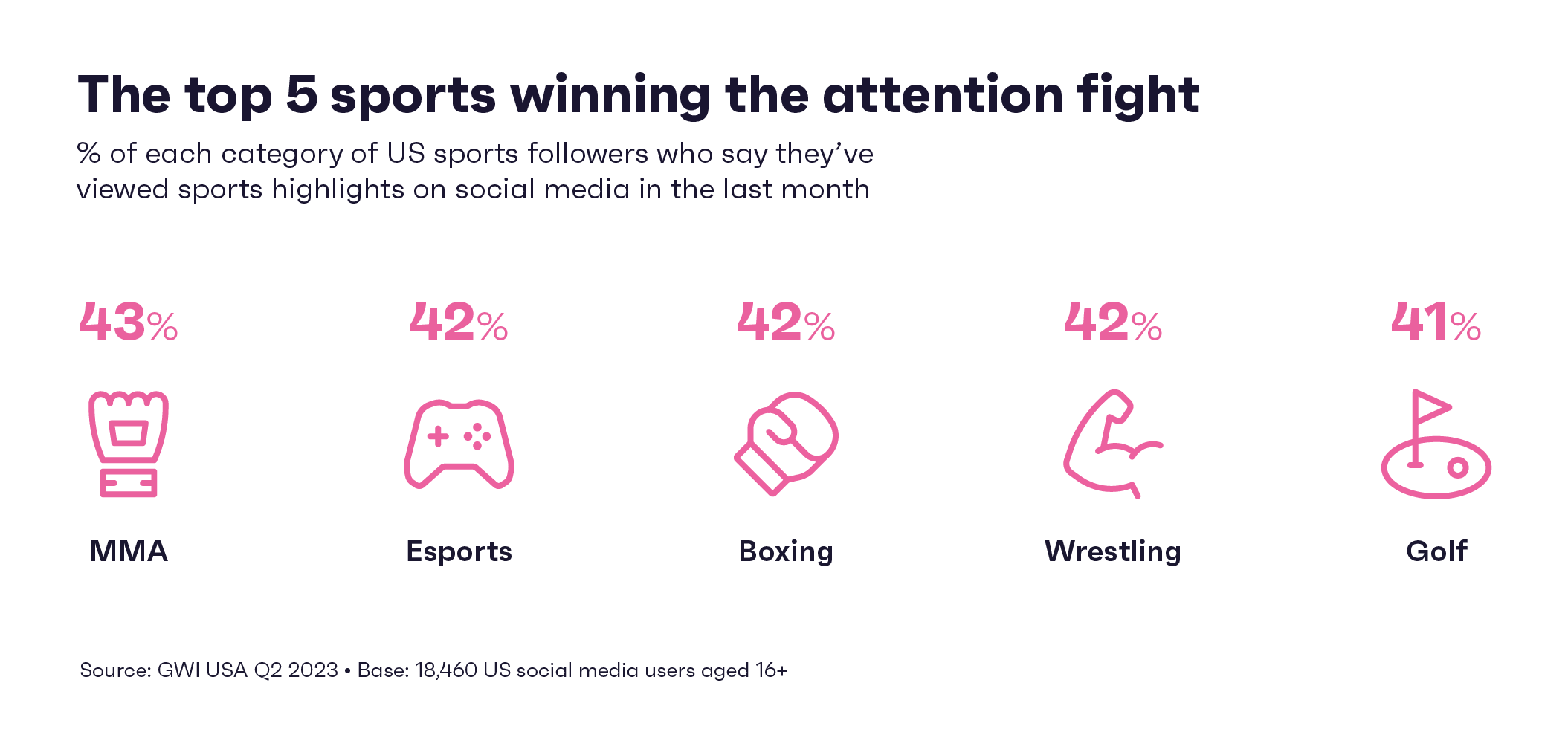Take a look at a typical “For you” page on TikTok, and the chances are you’ll see clips ranging from dance tutorials and recipes, to highlights from the big football match, movie trailers, and even “Get ready with me for a night out”.
That apparently random list shows how TikTok has become a one-stop shop for information, advice, and entertainment. Instead of using search engines or multiple social platforms, audiences are increasingly getting everything they want in one place.
Sports in particular are benefitting from this change. Instead of watching a full 90 minute football match, fans can watch 30 games condensed down to an easily digestible 3 minutes each. And if they’re still hungry, there are plenty of extra interviews, alternative camera angles, and niche mashups to satisfy even the most voracious appetite.
Keep scrolling for short-form content takeaways powered by consumer research you can use to build long-term success.
Runtime is of the essence
Sports were hit hard by the pandemic. Months went by without live games, leaving fans at a loose end. To fill the void, many of them downloaded TikTok, and the short-form video app quickly became the latest battleground for brands keen to capture the attention of TikTok’s one billion monthly users.
When live sports came back, expectations had changed. Fans had come to rely on hyper-effective algorithms guiding them to just the right sports highlights.
It’s no wonder then that sports highlights have been the fastest-growing type of content on social media over the last year. Today, with over 1 in 5 social media users watching this kind of content, everyone from broadcasters to leagues are experimenting with short-form video.
Watching sports as a main reason for using social media is up 17% since Q4 2020 in North America
Real-time highlight creation tools powered by AI are helping here. These tools can pick out important moments in real-time, and feed them straight to a brand’s social managers, helping them win the race for fans’ attention.
Not only are consumers saving time, they’re also saving money. Watching live sports typically requires a TV and cable/satellite subscription. And if you’re a combat sports fan, it’s not unusual to fork out close to $100 to watch your favorite fighters. With short-form, all you need is a device with an internet connection, something that very many consumers have in their pocket anyway.
Even though highlights and other content can capture the attention of fans on short-form platforms, many of them still want to watch full games as well. So while live sports are still a big feature of streaming services, there’s a growing market for watching on social media too.
Smaller leagues and niche sports are showing events on Youtube and other platforms – either the whole thing or just snippets – hoping to build up their fanbase as well as foster community and camaraderie among viewers. “Being able to watch games with friends” is sports fans’ top wish to improve their viewing experience, with highlights and live games bringing people with shared interests together.
But not only is the short-form format making sports viewing more democratic and convenient, it’s also impacting the kinds of sports we watch.
A knockout for combat sports
Sports that aren’t exactly mainstream – we’re looking at you, competitive lumberjacking – have benefitted from showing up on the algorithms that make short-form platforms tick. But bigger sports leagues have also benefited, and none more so than combat sports like mixed martial arts (MMA), boxing, and wrestling.

Watching sports highlights on social media is a big reason for this. MMA and boxing make up 2 of the 3 fastest-growing fandoms in the US, while MMA organization UFC, and wrestling promotion WWE, both have more TikTok followers than the NFL or Premier League.
These organizations are always busy, posting action, interviews, and behind-the-scenes clips to keep viewers constantly engaged. And with 1 in 5 sports fans saying that behind-the-scenes footage makes the live experience more exciting, they’re giving viewers exactly what they want.
Their short-form strategy is bringing in a whole new crop of fans too. We’ve tracked down some unexpected audiences who’ve become MMA fans in the last few years, including stay-at-home parents (+79% since 2020) and mascara wearers (+64% in the same period). And since MMA and boxing organizations mostly use a pay-per-view model for big events, more fans could mean more money.
With lots of extra eyes fixed on the ring (and indeed octagon), more brands are getting involved with combat sports. In 2022, the UFC saw a record-breaking year for partnerships, adding everything from big vodka brands to an official law firm.
It’s not just products that make for desired partnerships; individual athletes are in demand too. Ryan Garcia, an American boxer, has millions of followers on social media, which translate into pay-per-view buys. Partnerships with athletes of this stature can be hard to nail down, but with many rising stars in the business, partnership opportunities with individual athletes are endless, no matter what the brand.
The final round: long-term lessons
Millions of consumers are watching short-form video, especially since big names like Instagram and YouTube developed their own short-form offerings. And while MMA, boxing and so on have made a great start, there’s plenty of room for winners in other sports.
TV is still the home of live sports, something that’ll probably continue, but consumers are coming to expect hours of extra footage on social media, especially the punchy short-form variety. Real-time highlight creation is improving with the help of AI, enabling fans to share big moments almost as soon as they happen.
At the same time sports are bigger than what just happened on the field of play. Fans want to see interviews and behind-the-scenes footage as well, and short-form is the perfect place for these. The almighty algorithm can bring in new viewers, and thinking outside the box can turn regular swipers into dedicated fans.









